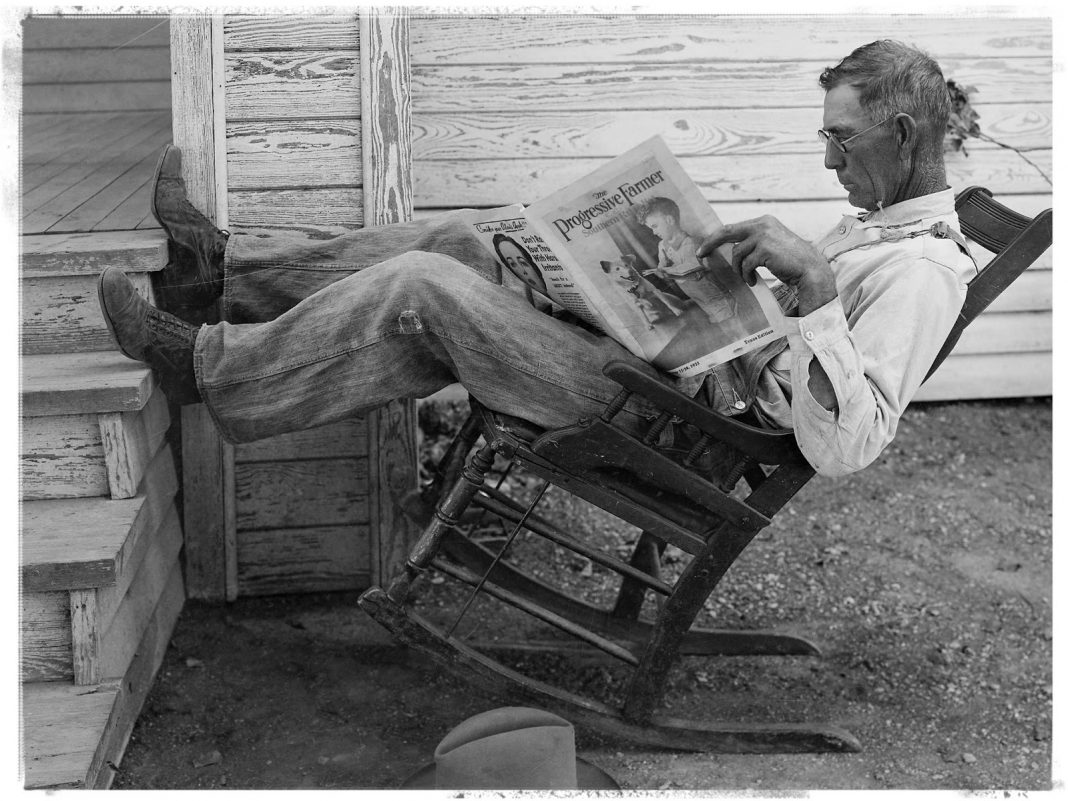“Inhuman Communication: Søren Kierkegaard Versus the Internet.” Patrick Stokes draws on the Danish philosopher to gain insight into our digital media ecosystem: “According to Kierkegaard, … the media ― his and ours ― violates the face-to-face scale on which human communication is meant to take place. ‘God,’ Kierkegaard insists, ‘really intended that a person should speak individually with his neighbour and at most with several neighbours.’”
“T.S. Eliot, Populist.” Robert C. Koons parses T.S. Eliot’s fruitful distinctions between elities and the upper class, between levelers and populists, and considers the policy implications that Eliot’s thinking has.
“What it’s Like on Tour with California’s Road Tripping Poet Laureate Dana Gioia.” Carla Javier rides along with Gioia to a poetry reading. Gioia has visited all 58 counties in the state of California during his tenure as poet laureate.
“Pouring One Out for Anthony Bourdain.” Olivia Durif considers Bourdain’s essential insights into the world of food, hospitality, and death. (Recommended by Tom Murphy.)
“European Christian Missionaries and their False Sense of Progress.” Willie Jennings describes the deep damage wrought by colonialism’s destruction of place-centered identities: “For the first time in human history, peoples (especially in the colonized worlds) were forced to think of themselves in disorienting ways, to think of themselves away from land and away from animals and into racial encasement. They were forced to reduce their identities to their bodies and the activities of the body.”
“Amazon’s Great HQ2 Swindle. Daniel Kishi explains the ways Amazon continues to rig the system and extract billions of dollars from taxpayers.
“Unfair Advantage: Stacy Mitchell On How Amazon Undermines Local Economies.” Tracy Frisch interviews Stacy Mitchell, co-directer of the Institute for Local Self-Reliance, about Amazon’s quest to ”control the underlying infrastructure of commerce.”
“Did the Cyber Revolution Save Sioux Falls?.” Despite Amazon’s choice of two megacities, Joseph Bottum wonders if computer technology helps mid-sized cities: “The kids are still fleeing the farm towns, but they’re not going to Chicago or Phoenix, as they might once have. They’re moving to Sioux Falls, instead.”
“Break Up the Liberal City.” Ross Douthat writes about the way big cities—“meritocratic agglomerations”—impoverish our country. Too bad his policy suggestions won’t be enacted.
“What About a Farm?” Anthony Minnema suggests that more Christian colleges—as well as parents and students—should think about combining the liberal arts with a work-college model.
“How the Dust Bowl Undermined the Libertarian Ideology of Plains Farmers.” Casey Chalk narrates the complex history of independent farmers, ecological depletion, and federal intervention that has been playing out in the agrarian midwest. (Recommended by Jon Schaff.)
“There Is Something To This: The Strange Career of My Copy of the WPA Guide to Mississippi.” Peter Candler describes the WPA travel guides of the 1930s and 40s and, in particular, the history of his copy of Mississippi guide.
“2018 Prairie Festival.” Video recordings of many of the sessions from the 2018 Prairie Festival have been posted. The conversation between Mary Berry and Matthew Derr may be of particular interest, but there are many good presentations worth watching.





Re: Dust Bowl.
Casey Chalk steps out of the narrative too soon. The policies and institutions erected to palliate the human and ecolgical crises of the Dust Bowl (itself just one symptom in a long history of poor farming going back to the earliest European immigrants) have, indeed, sapped the independence of the American farmer, but without significantly alleviating the underlying problem, which lies in the shift from subsistence farming to industrial farming. The farm, to paraphrase Sir Albert Howard, can feed the farmer; it can usually also feed the village; but it remains to be seen whether it can support industry. That was almost a centuty ago; today, the evidence is overwhelming that the farm cannot, for very long, support industry. And what happens now? Apparently, we close our eyes to the impending ecological and social disaster while we accelerate along a course that, while sometimes buying a few years’ illusory tranquility, has reduced the percentage of ‘farmers’ in the country to less than two percent of the population, of which, note well, the average age is fifty-eight; more than seventy-five percent are losing money at it; and the suicide rate for their demography is the highest in the country.
That these facts don’t raise a national panic should boggle the mind of any reasoning human being.
Comments are closed.